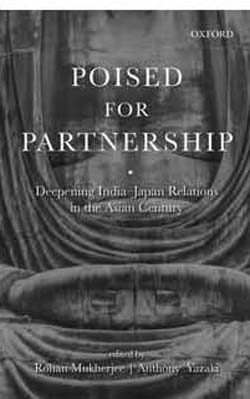It is often a matter of surprise and disappointment that two countries, namely India and Japan, well-established and vibrant democracies which have no historical baggage of any dispute, and which on the other hand are bound by Asian cultural traditions and values, and the teachings of Buddhism, still do not find themselves having a substantive relationship. Actually there are considerable complementarities in the economic field; moreover, the two share a common security concern of the rising power of the neighbour. Maritime security is an essential requirement for both given their near total dependence on external sources of energy. How these two countries located as they are at the two ends of the Asian continent prepare themselves for working together for peace, security and prosperity in Asia and beyond is a subject of much interest and attention even as the Asian Century continues to unfold. The editors of the book Poised for Partnership: Deepening India-Japan Relations in the Asian Century have thus chosen a very apt and promising area for their study and analysis.
It is not unnatural that the relationship has seen ups and downs over the past seven decades. India was fully understanding and supportive of Japan during and after Japan’s Occupation and signed the Peace Treaty in 1952 waiving all reparations from Japan. The long period of Cold War however marked a chill in the relationship. In the late 80s and early 90s (which coincided with the end of the Cold War and beginning of the economic liberalization in India) the Japanese interest in India started growing rapidly. However, the 1998 nuclear tests by India elicited a sharp reaction from Japan and led to the imposition of severe sanctions. The Japanese apprehension began to be overcome during Prime Minister Mori’s visit to India in 2000 and the two countries entered into JapanIndia Global Partnership in the 21st Century. This reviewer recalls having led the first official-level talks with MITI (the powerful Ministry of Trade and Industry) in Tokyo following the Japanese decision to start relaxing the sanctions regime. It was during the visit of Prime Minister Koizumi in 2005 that the relations began to acquire a strategic dimension. The relationship was elevated to Global and Strategic Partnership and during Prime Minister Modi’s visit to Japan in 2014 it was further raised to Special Strategic and Global Partnership. In an article in the Times of India in December 2015 Prime Minister Abe of Japan placed a special emphasis on Japan’s relationship with India adding that it had the largest potential for development of any bilateral relationship anywhere in the world. Clearly there are signs of a substantial change in the Japanese perception of India.

